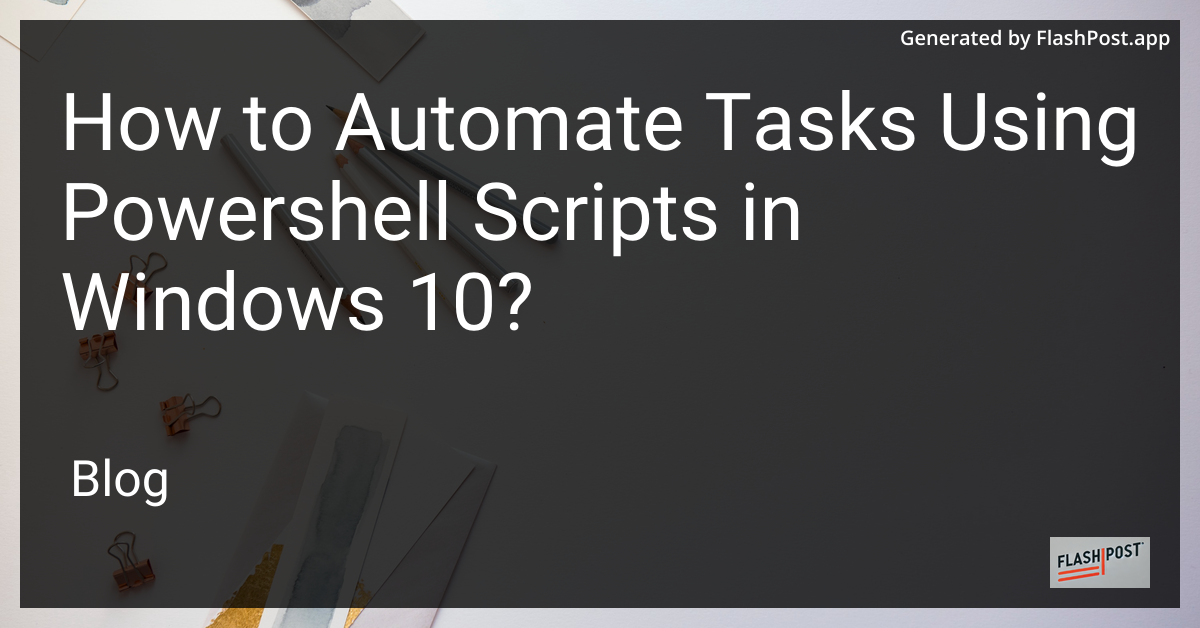
In today's fast-paced digital world, automating repetitive tasks can save you a significant amount of time and effort. With PowerShell scripting, you can streamline processes and focus on what truly matters. If you're using Windows 10, harnessing the power of PowerShell for automation is a must-have skill. This guide will walk you through the basics of task automation using PowerShell scripts.
PowerShell is a task automation framework comprised of a command-line shell and scripting language. It is designed for system administrators and power users to automate the administration of Windows operating systems and applications running on Windows.
Before you dive into automation, it's crucial to familiarize yourself with some PowerShell scripting techniques. This includes understanding how to write simple scripts, perform loops, and utilize conditional logic. Once you have a firm grasp of the basics, you can start crafting scripts to automate tasks.
You can start PowerShell by typing "PowerShell" in the search bar of your Windows 10 taskbar. Right-click the icon and select "Run as administrator" to ensure you have the necessary permissions to run scripts.
To create a PowerShell script, open a text editor like Notepad and save the file with a .ps1 extension. For example:
# Test Script to display Hello World
Write-Host "Hello, World!"
This script simply outputs "Hello, World!" to the console.
Once you've written your script, you can execute it from PowerShell by navigating to the directory where your script is located and typing:
./YourScriptName.ps1
To automate running your script, you can leverage the Task Scheduler application in Windows 10. This allows you to schedule your PowerShell script to run at specific intervals or in response to certain events.
As you become more familiar with PowerShell, you'll want to delve into more advanced topics such as iterating over datasets and automating file management tasks. Consider learning how to iterate over CSV files or delete files based on certain conditions.
Automating tasks with PowerShell scripts in Windows 10 can massively boost productivity and reduce the risk of errors from manual operations. By following this guide, you're on your way to mastering PowerShell scripting and unlocking the full potential of Windows 10 automation.